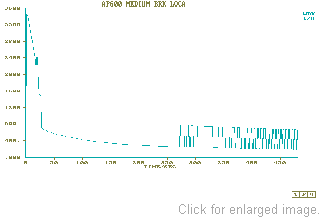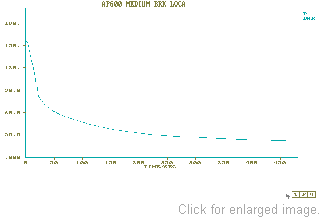Sample Run - A DVI Line Break
As a sample run, the AP600 was tested for a double-ended DVI
line break, the results will be compared against an analysis[4]
performed by the Los Alamos National Laboratory using the TRAC
code.
To start the run, the user selects from a set of initial conditions
(IC) corresponding to various power, flow, and time-of-life conditions.
Click at one corresponding to a steady state full power middle-of-life
condition, the is started. During operation, the mimic displays
the plant condition and the operator controls its operation by
using a mouse. The operator can initiate malfunctions that cover
all categories analyzed in the plant's Safety Analysis Report
and beyond. The severity, delay and ramp time of each malfunction
is then entered. The status of every valve or pump in the mimic
can be overridden by the operator to simulate a failed on/off
situation. Partial failures at fractions of the full capacities
are also possible. During execution, the operator can snap a
new IC, freeze, back-track, and plot all simulated variables.
These features are similar to the instructor's station of a full-scope
simulator.
Due to the reduced-node thermal-hydraulics model for the primary
coolant, there is no exact location for specifying a break other
than its vertical elevation to a reference point. When the system
water level drops below the break elevation, the discharge flow
turns into two-phase and vapor. This was witnessed by the ARS
calculated step changes in figure 3. The
reactor was tripped automatically on the signal of low pressurizer
pressure, followed by the steam generator feedwater control valves
closure.

Figure 3
Subsequently, PRHR isolation valves open, CMT isolation valves
open, Main Steam Isolation Valves close, and Reactor Coolant
Pumps trip, all are consistent with the TRAC analysis. At about
3 minutes into the event, ADS stages 1 to 3 are opened on low
CMT level. Figure 4 shows the primary
pressure. The ARS result shows primary pressure is initially
higher than that of TRAC. After ADV opening, both depressurized
quickly to the containment pressure. The secondary pressure stabilized
at the steam dump valve's set point.

Figure 4
At about 350 seconds, the primary pressure is below the containment
pressure so the IRWST drain valves open to fill into the RCS.
|
 |
Previous
Next
|



